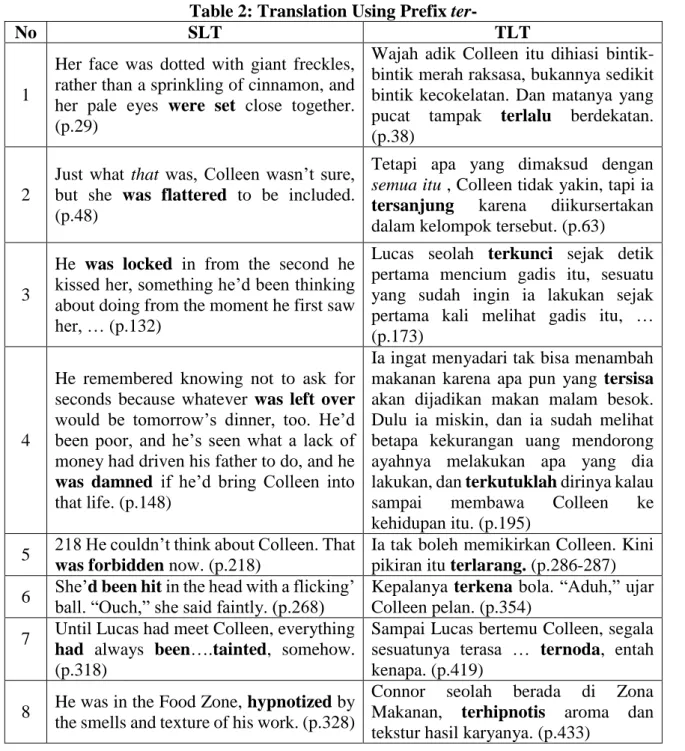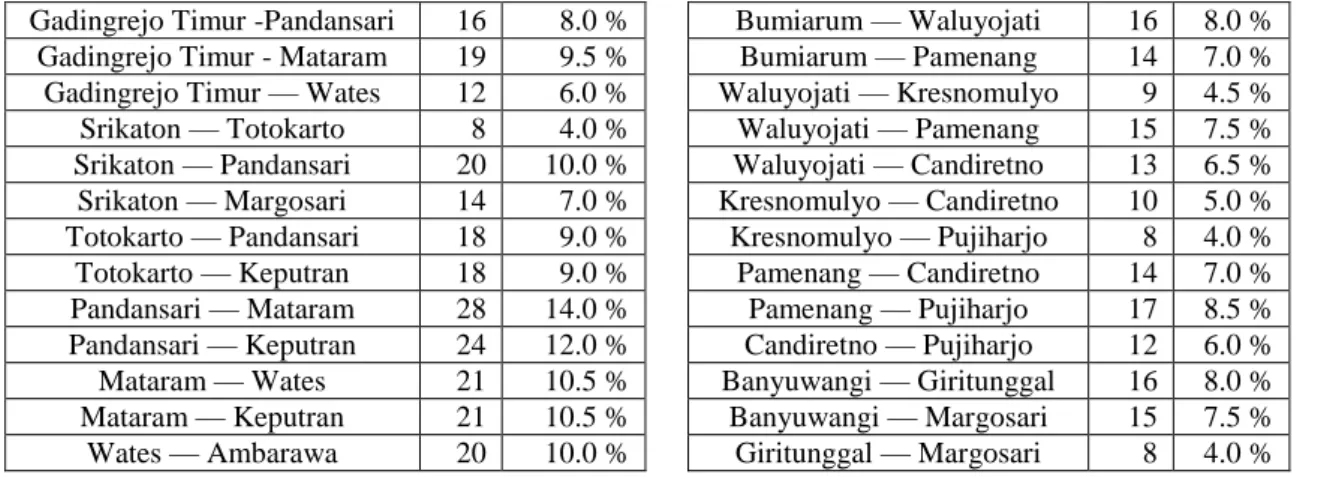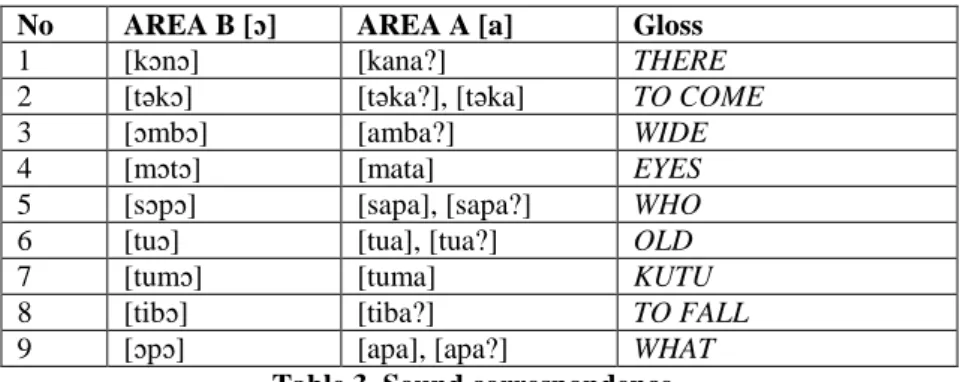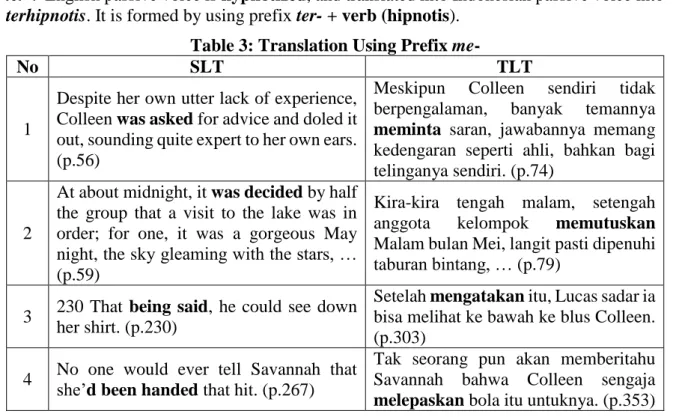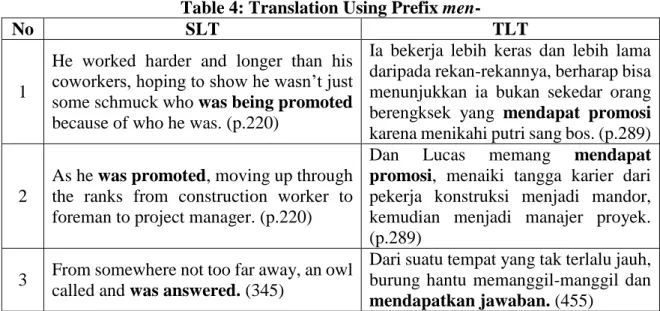The ethno-national conflict in Aceh fighting for independence from the Unitary State of the Republic of Indonesia has been going on for almost three decades since 1976. The ethnic conflict in Aceh seeking independence from the government of the Republic of Indonesia has been going on for decades, precisely since 1976. AMM is a team formed under an agreement between the Government of the Republic of Indonesia and GAM (Free Aceh Movement) signed in Helsinki, Finland on August 15, 2005 and in office since September 15.
One thing that can be noticed is the opening sentence of the memorandum of understanding in which the subject refers to the Indonesian government and GAM. The parties undertake to create the conditions in which the government of the Acehnese people can manifest itself through a fair and democratic process within the unitary state and constitution of the Republic of Indonesia. 4) "Aceh will exercise authority in all sectors of public affairs that will be administered in ..., except for the areas of foreign affairs, external defense,. which belong to the Government of the Republic of Indonesia in accordance with the Constitution.
Therefore, this research can significantly portray the brighter and wider map of Javanese variation in this area.

A Note on the Form and Use of the Language of Nias Wa’özisökhi Nazara
Until about five decades ago, most Nias speakers were monolingual. Nias speakers did not seem proactive enough to be bilingual. Around the years mentioned above, many Nias language speakers often held traditional festivals.
Assuming the importance of language in the context of customs, speakers of the Nias language almost never used any language other than the Nias language to name theirs. About four decades ago, interaction between speakers of the Nias language and those who speak Indonesian and/or other languages began to increase drastically. They operated according to the grammar rules of the Nias language, whose words never ended with consonants.
Coined words tend to refuse to follow the morphological rules of the Nias language. This reveals that the national language has interfered with the sentence construction of the Nias language. This means that there is no reason not to worry about the future story of the Nias language.
The attitudes of the speakers of the Nias language contribute significantly to present and future conditions of the Nias language. Unfortunately, there was no convincing indication that the attitude of every speaker of the Nias language is positive. Fostering environments, integrated and sustainable programs, and ongoing support for the preservation and revitalization of the Nias language are crucial.
Blended-Learning: The Responses from Non-English Students in the Indonesian Tertiary Context
Fatimah Mulya Sari 1 , Achmad Yudi Wahyudin 2
These interpretations were used to find out the students' attitudes towards the implementation of blended learning in their teaching and learning process. Meanwhile, the interview was conducted to reveal the students' reaction to the implementation of blended learning in their language learning activities. There were 42 students who thought neutrally or moderately that they really enjoyed the learning activity with blended learning.
In addition, twenty one students (25.61%) showed significant results and seven students (8.54%) strongly agreed that they liked learning English using blended learning. In the third statement, more than 50% of students indicated a significant result that blended learning helped them improve their English skills in the present and in the future. On the other hand, most students believed that learning English using blended learning helped them create opportunities for communication.
The interpretations showed that the students gave positive reactions and attitudes about the implementation of blended learning in their language teaching and learning process. The results provide a positive insight to implement this blended learning in the language learning process, as the educational benefits are achieved by the students. The majority of the students observed agreed that their use of blended learning using social media had encouraged them to be more involved and interested in learning a language.
In light of the results, it can be concluded that most of the students showed their positive responses and attitudes towards the implementation of blended learning in their language teaching and learning process. There is no doubt that blended learning is a new and effective learning method for student interactions and communication, especially in discussing their projects. Both teachers and students have an important role in the effectiveness of using blended learning in teaching and learning activities.
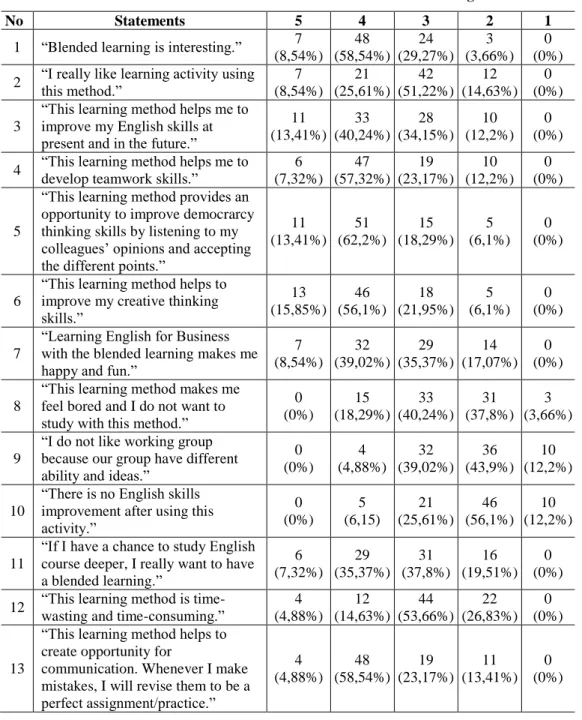
An Analysis of Teacher’s Speech Acts in Teaching and Learning Process
Widi Andewi 1 , Winia Waziana 2
In this study, the researcher only observed the speeches, specifically the speech acts of the teacher. After the data has been collected and transcribed, the researcher analyzes speech actions produced by the teacher in the classroom. Based on the table, the total production of speech actions by the teacher in the classroom is 156 utterances.
From the collected, the teachers created the types of directive speech acts such as ask, requirement (command and order), and advisory (advice and suggestion). Then the ask type of the teacher's speech acts was used to ask the students about something constructed in question form. The types of expressive speech acts produced by the teacher were apologizing, praising, congratulating and thanking.
The teacher agreed and felt satisfied with the response (behavior) of the students that appeared when using "good". In conclusion, in the teaching and learning process, directional speech acts are mostly produced by the teacher than the other speech acts. So it can be said that the teacher often asks the students to do something.
In the classroom, the teacher's expectation when using directive speech acts is student compliance. Speech act directives in the classroom are very useful for the teacher because they are used to manage and control the behavior of students during the learning process. In addition, the teacher's instructions are also a good model for students to learn pragmatics in the classroom.
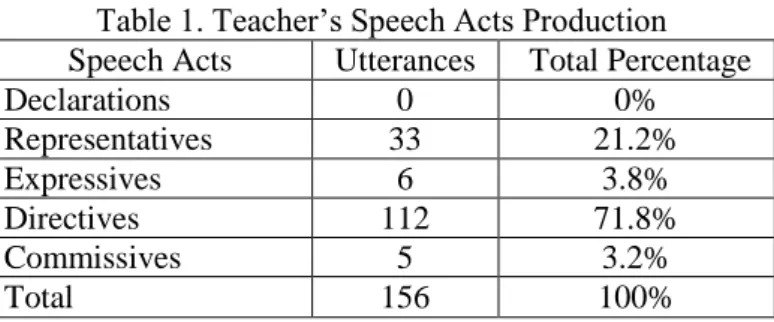
Revisiting English Competence at Hotel Afrianto 1 , Ingatan Gulö 2
It is in accordance with Croker (2009), he emphasizes that the qualitative method is characterized as an explanatory method with the aim of understanding the pattern of behavior and thinking. This is because these positions are closer to the guest, especially foreign guests, than other positions. It is confirmed because it is so strange to say "How are you" on the first date, so it is acceptable if the situation is as the respondent explained.
This abuse happens because of first language interference and as a matter of fact it is because of translation issues. Offering help is not only done by receptionist and operator, but it is also expressed by other respondents in other positions such as waitress, pool attendant and Guest Relation Officer (GRO). It is thus getting closer to the guest, this is something good especially in the hotel industry.
Those problems are 1) there are some unfamiliar terms related to amenities that are difficult for respondents to explain due to lack of vocabulary; The first question is, "Do you usually use English to explain hotel facilities and city information to foreign guests?" Some respondents answered 'yes' to this question, others did not. Moreover, it appears that they use Indonesian because the foreign guests who come can speak in Indonesian.
The first case is about the greeting, it turns out that all respondents greet the foreign guests with an English expression. The common expressions used are "Good morning/afternoon/evening, Sir/Madam", so in receptionist, operator and bellboy positions it is followed with. Regarding the results, it is really suggested to the hotel developer/manager to create the standardized expressions which can be in the pocketbook so that the hotel staff can have the minimum insight or in this case the standardized competence/skill.
The Translation of English Passive Voice into Indonesian Herlina Lindaria Simanjuntak
The English passive voice is was dotted, consists of to be (was) + past participle (dotted). The English passive was elected, it consists of to be (was) + past participle (elected) and translated into Indonesian passive in dpili. The English passive voice was consumed is composed of to be (was) + past participle (consumed) and translated into the Indonesian passive voice in fulfilled.
The English passive voice is was being ripped, it is composed of to be (was) + being + past participle (ripped) and translated into Indonesian passive voice in dibelah. The English passive voice is was said, it is made up of to be (was) + past participle (told) and translated into the Indonesian passive voice to ordered. It is formed by using the prefix di- + verb (ikuti). b) passive participle with the prefix di-.
It is formed by using the prefix di- + verb (tumis). c) passive voice in passive participle with prefix di-. English passive voice is packed, it is formed by being (was) + past participle (packed). English passive voice is flattered, it is formed by being (was) + past participle (flattered) and translated into Indonesian passive voice in tersanjung.
English passive voice is was damned, it is formed by being (was) + past participle (damend) and translates into Indonesian passive voice in terkutuklah. English passive voice is forbidden, it is formed by being (was) + past participle (forbidden) and translated into Indonesian passive voice in terlarang. English passive voice was asked, it is formed by being (was) + past participle (asked) and in Indonesian active voice translates into minta.
The English passive voice is settled, it is formed from be (was) + the past participle (settled) and is translated into the Indonesian active voice in decided. The English passive voice is u struku, it is formed from be (was) + the past participle (bent) and is translated into the Indonesian active voice in berpeluklan.
